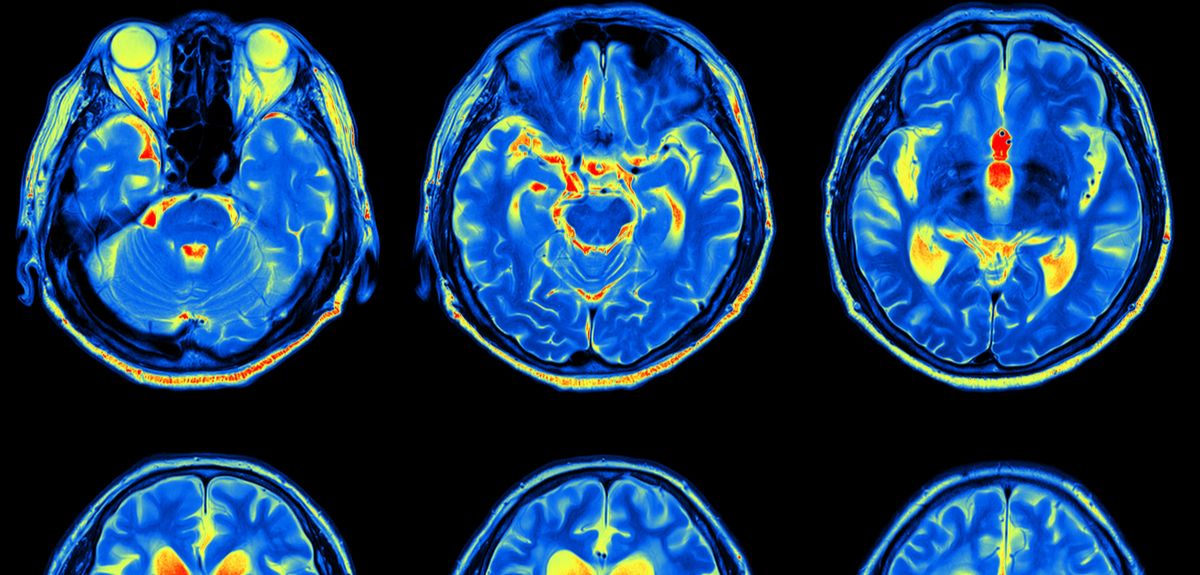
Image credit: Shutterstock
Breathing with your Brain - Royal Society Summer Exhibition
Researchers from the University of Oxford have been sharing their work with the public at the Royal Society Summer Science Exhibition (1-7 July 2019).
Breathe Oxford is a diverse group of neuroscientists, psychologists and clinicians studying the neuroscience of breathlessness. Their work shows that breathing is about more than just the lungs. In fact, the brain has a powerful influence on our experiences. This explains why some people still feel out of breath, even when they have been provided with medical care.
They explore how the brain controls our feelings of being out of breath using cutting-edge brain imaging technology. Understanding this control system could lead to revolutionary, personalised treatments for breathlessness.
Their exhibit at the Royal Society Summer Science Exhibition will bring the topic of ‘Breathing with your Brain’ to life, helping visitors to understand the how the brain controls our feelings of being out of breath.
Researcher and lead organiser Dr Sarah Finnegan said: 'Our research has shown the power of the brain-body interaction in influencing how we perceive our breathing.
'This is a relationship that we are only now just beginning to understand, and we hope eventually to develop target treatments for individuals, helping millions of people who are limited by their breathlessness.
'We are thrilled to be able to share some of the cutting-edge neuroscience that takes place at Oxford with visitors to the Royal Society, and hopefully we can inspire some future scientists!'
It is estimated that one in nine people experience some form of breathlessness, which is most common in conditions such as heart failure, lung disease, panic disorder and Parkinson’s. But there are also significant numbers of people who have unexplained breathlessness, which Breathe Oxford hypothesise might be driven by the networks in the brain.
Breathe Oxford has examined breathlessness in athletes, healthy individuals and people with chronic lung disease, seeking clues as to why some individuals become disabled by their breathlessness, while others, with the same lung function, live normal lives.
Visitors to the exhibit will be able to simulate living with chronic breathlessness by exercising on the ‘Steppatron’ with a straw in their mouth and a clip on their nose. They will also be able to witness the brain’s relationship with breathing on a 3D-printed scale model of a human torso with breathing lungs and LED lights which will highlight the neural pathways between the brain and the lungs. A specially commissioned animation will also reveal more about the background to the science.
Other stalls at the Summer Exhibition this year that involve Oxford research are:
Robots in the Danger Zone - Dr Maurice Fallon and others from the Department of Engineering Science's Oxford Robotics Institute will be demonstrating their research into robotics for inspection of dirty, dull and dangerous places, specifically with walking robots, such as their quadruped ANYmal. The stand is being presented by the ORCA Robotics Hub. See a video of the group's work here.
Living on the Moon! - an interactive experience highlighting the progress of lunar science since the Apollo 11 Moon landings 50 years ago. The exhibit illustrates the journey from Moon landing, to Lunar sample science, to the current generation of Moon rovers looking for water on the Moon, and provides a look forward to the next 50 years and a vision of a permanent human presence on the Moon. (Researcher: Dr Neil Bowles from the Department of Physics.)
In Your Element - 150 years of the periodic table: Investigating the elements that are essential to life. Biogeochemists from the Department of Earth Sciences' OceanBug team are presenting the journey of elements from the earth’s crust through the ocean and ultimately to feed life throughout Earth’s history. The exhibit is led by the University of Warwick.